
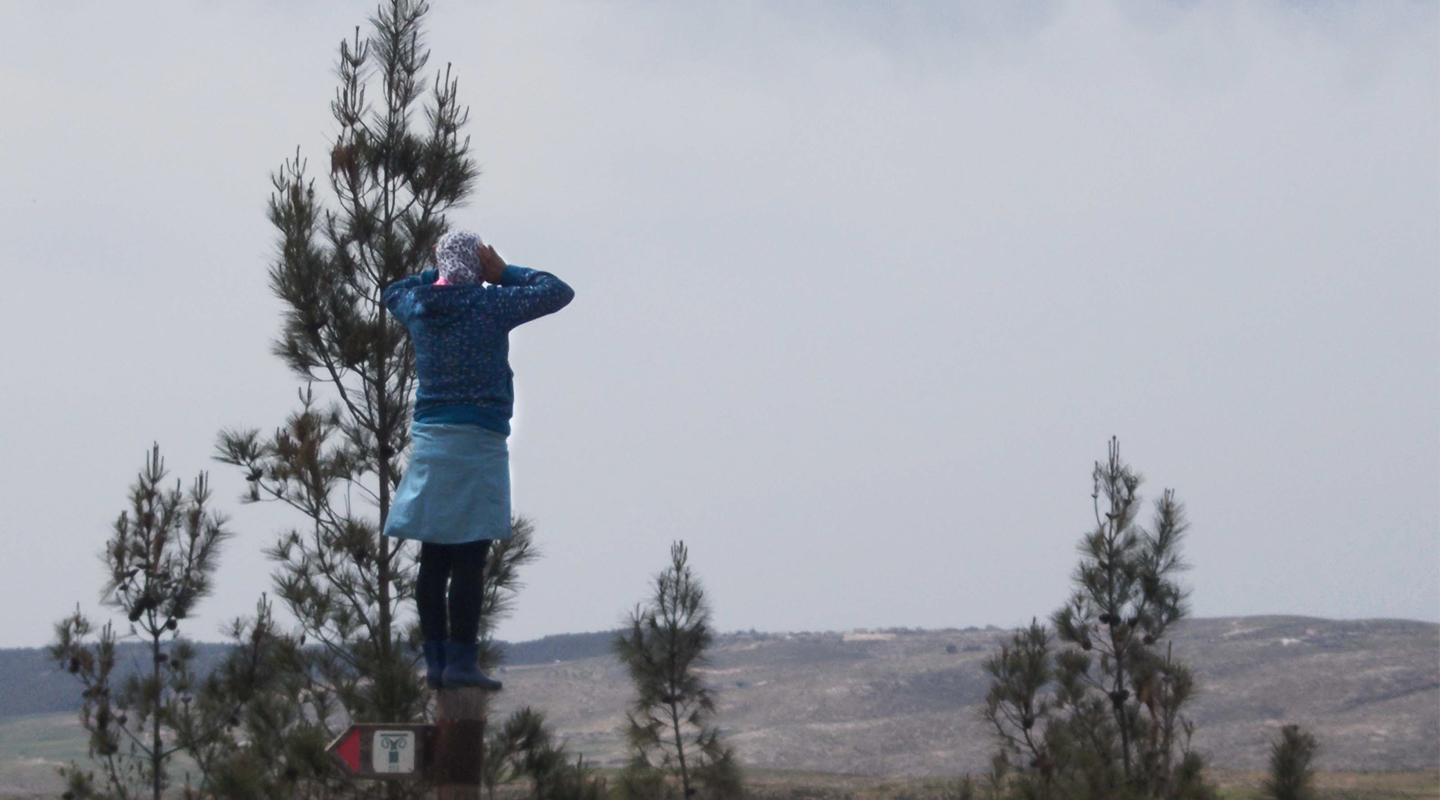
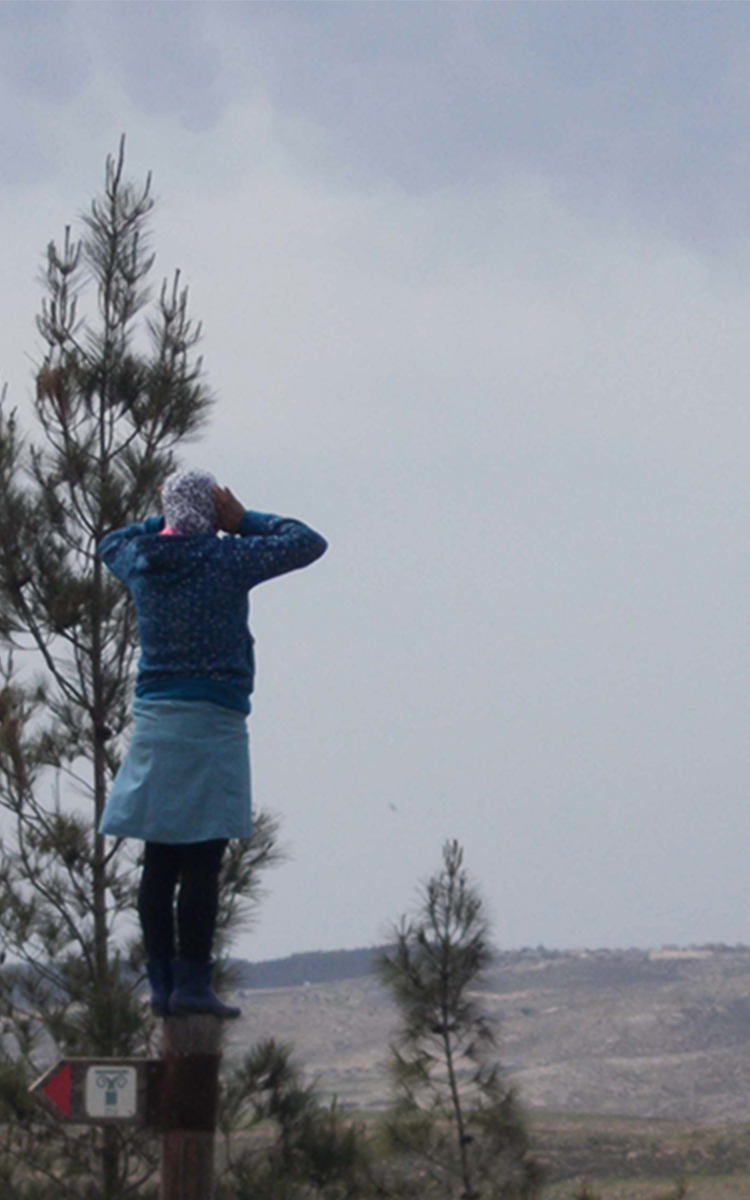
The exhibition Life and Resilience As Captured by Bedouin Women, presents a collection of still photographs and videos taken in the last years by Bedouin women in 9 unrecognized villages and in 1 recognized village in the Naqab. In the exhibition Bedouin women bring testimonies to a life of continuous institutional dispossession: expropriation of land, non recognition by the State which results in refusal to provide basic services such as connection to water, electricity , sewage and public transportation. The photography exposes the women’s participation in the struggle against home demolitions and their contribution to the clinging to the land – Sumud.
The women through their camera lens proclaim: we are citizens too but our citizenship was expropriated and therefore we live in unbearable conditions. We demand what every citizen deserves, everything that all other citizens take for granted with no need for a struggle.
The courage of these women photographers is remarkable and their commitment is great although some of them chose not to be identified by their full name. The photographs taken puts them in the front line. With their simple cameras they document the harsh reality inflicted on them by the authorities and by that they create a collective community memory. They exceed the role assigned to them by the traditional society, take a stand publicly and take part, even if limited, in leadership roles.
Negev Coexistence Forum in the Naqab is a grassroots organization established in 1997 by a group of Arab and Jewish residents in the Naqab who protest against the State’s policy and actions of discrimination against its Arab-Bedouin citizens. The organization also acts in promoting the rights of the Arab-Bedouin indigenous community and for a shared society in the Naqab.
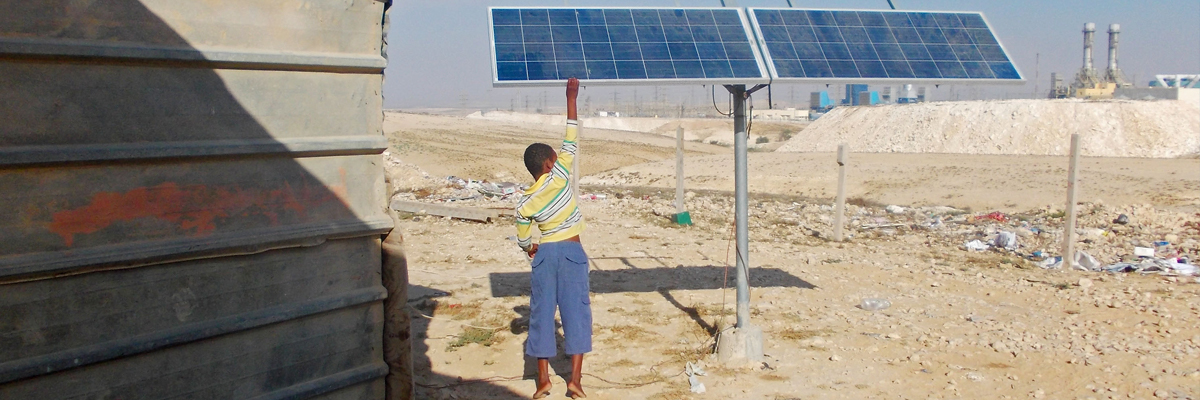
The Bedouin community in the Naqab is approximately 270,000 people with about 90,000 of them living in 35 unrecognized villages. These villages do not appear on the official maps and to most of them the State of Israel does not provide basic services such as health, education and infrastructure.The villages are not connected to the national electricity grid and water, roads are not paved and there is no sewage disposal. The residents of these villages have limited representation in the local governing bodies and in general they cannot vote in the municipal elections. Due to the policy of nonrecognition and lack of approved urban building plans, building permanent structures is illegal and results in heavy fines and repeated home demolitions.
The intentional denial of basic rights from the residents in the unrecognized villages in the Naqab goes hand in hand with the systematic brutality of the police which threatens to shatter the fragile fabric of life at any moment. The Arab-Bedouin residents are Naqab natives. Their indigenous status is not recognized by the State of Israel and as such they are deprived politically, socially and economically, and above all are dispossessed of their homes by forced displacement. By choosing to perform a policy of forced displacement, the State is not only violating international covenants but also neglects its moral duty to protect their human rights.
Recognition and providing infrastructures are prerequisites for receiving basic services. As long as the Bedouin villages in the Naqab remain unrecognized and unplanned, the people there will suffer from lack of running water, sewage and garbage removal, lack of electricity, internet and public transportation. There are no paved roads in any of the villages but in few of them there are access ways. Health and education services are inadequate since schools exist in only some of the villages and only some of them are connected to water and electricity. The residents are forced to drive tens of kilometers for health services which can be critical in emergency cases. Health clinics and mother/ child clinics exist only in 4 villages. According to the Ministry of Health (2019) , infant mortality in the Bedouin community is 9.4 to 1000 infants, a rate that is 3 times the average infant mortality in Israel.
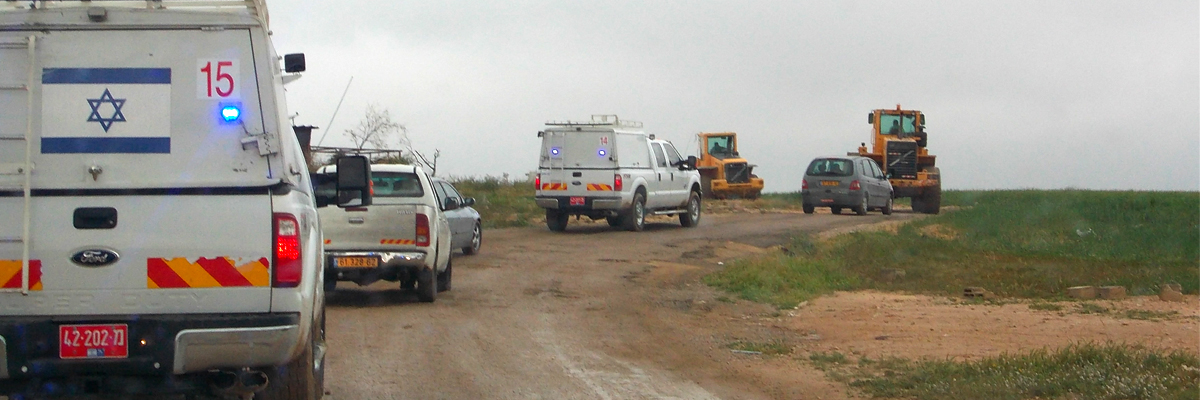
The Bedouin community in the Naqab has been facing for years the frequent and widespread phenomenon of home demolitions. Home demolitions are a practical tool for implementing the State’s policy of expelling residents from the villages and enforcing urbanization upon them. This practice is also an expression of discriminative governing.
Members of the Bedouin community are Israeli citizens, nevertheless the State insists on treating them as hostile elements and not as citizens of equal rights. Instead of acting to protect the Bedouins’ rights for dignified life and adequate housing, the State’s authorities are acting systematically to demolish their homes and move them, against their will, from their ancestral lands, a policy that is contradictory to several international covenants.
Intimidation, police brutality, surveillance by drones and inspectors are some of the tools the State of Israel is using for evicting the Bedouin residents from their lands. Most of the community members wish to continue living in their villages in accord with their way of life. The State is not conducting fair negotiations with the residents concerning the issue of lands ownership prior to the establishment of the State of Israel.
The State’s common practice of homes and structures demolitions, over 10,000 in the years 2012-2019, accompanied by traumatic experiences of violence and unfair dispossession, has devastating consequences for tens of thousands people on a personal level, and creates distrust between the State and its Bedouin citizens as a collective.
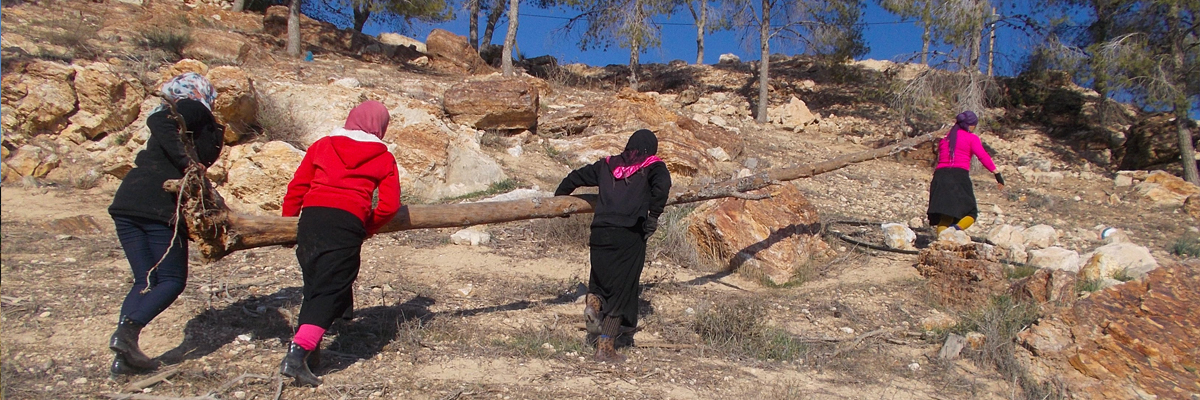
Before the establishment of the State of Israel the economy of the Arab Bedouin population in the Naqab was based mainly on dry farming and grazing agriculture. All family members, women, men and children, participated in this economy with the women taking an active and significant role. Men and women shared the responsibility for managing the housekeeping, shepherding, cultivating the land and building the tent. In addition, the women weaved the tent sheets and prepared the food.
After the war of 1948 and in the first years of the 50s, the State of Israel imposed martial law on the Palestinian Bedouin population, such as that imposed on the entire Palestinian population that stayed in the country after the Naqba. During these years the State forced about 90% of the Arab Bedouin population which lived in the Naqab to move to the Gaza strip or to Jordan. The 10% left were sent, by the State of Israel, to an area called ‘al-Siyāj’, the triangle between Dimona, Arad and Beer Sheva. Most of the Bedouin population lives in this area to this day.
A forced urbanization process of the Bedouin population in the Naqab started in the 70s by evicting people from their homes to planned townships. The Bedouin population started living in permanent buildings, and the women were the ones who absorbed the bulk of the social and economic harm that resulted from the change. For them, the loss of lands they used to cultivate and the loss or decrease of the herd, resulted in a decrease of their partnership in building the tent and the household economy. Their socioeconomic role narrowed down to child rearing and home care.
The fact that Arab Bedouin women are not working outside their home is usually attributed to culture barriers of their society. However, many studies show that practical handicaps such as: lack of close employment possibilities, poor public transportation, lack of day care services, poor education systems, discrimination by employers, poor command of the Hebrew language and more, all these are the main barriers for Bedouin women to participate in the labour market. The employment rate among Bedouin women (ages 25-54) is very low, and according to 2017 figures amounts to about 34%.
Geographic, social and economic isolation from the formal labour market leads many women, especially in the unrecognized villages, to resort to “survival economy”. They are required to build an economic safety net for their families by producing and marketing traditional products. In addition, the women work at their household chores, such as rearing the children, cleaning, agriculture etc, with no financial reward. The burden of work is not evenly divided between men and women as the women work with no financial reward while the men have the paid jobs. As a result, the men get the income and recognition for their economic contribution while most of the womens’ work remains unpaid, unappreciated and unrecognized.
Grassroots organizations of Arab Bedouin women have conducted successful projects of participatory processes which enabled building leadership and involvement amongst women. The growing awareness of many of the women raised the demand for equality in the community. However, their political participation on the local level is not yet obvious and gender perspective in decision-making in the community is very limited. As a result of raising awareness, the participants in the photography project became agents of change in the community and their sense of empowerment affected other women in the community.
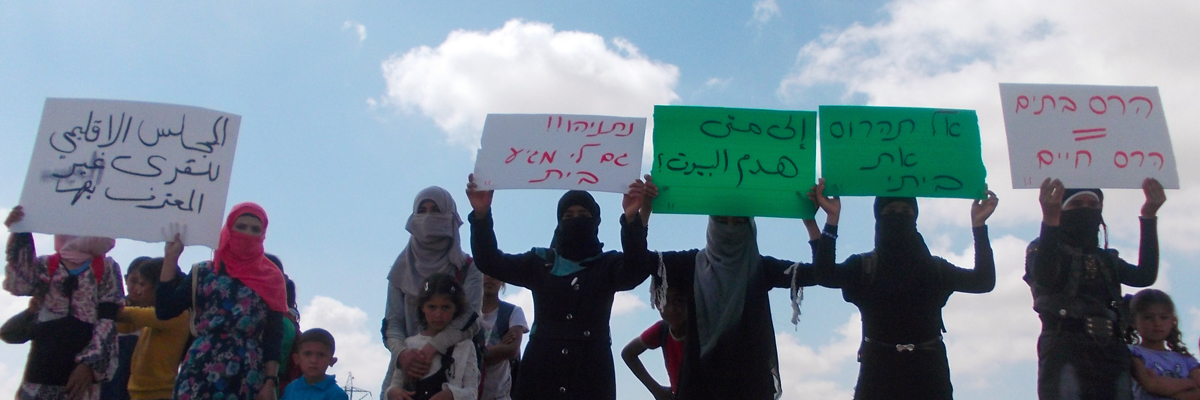
The main reason for the conflict between the Arab Bedouins and the State, is the nonrecognition by the State of the Bedouin villages and of the land ownership rights of the Bedouins. The Bedouins are citizens of the State, and they are natives of the Naqab who have been living in this area for hundreds of years. As other indigenous people and minorities around the world, the Bedouins are subject to colonialism, invasion of their living areas and their conversion into people of no status in their own living areas . Listing of land ownership claims in an area around of Beer Sheva was made possible in the 70s but was stopped by the State without clarifying the claims and the villages were left with no status resulting in lack of education and health facilities and infrastructure. All this has resulted in deep neglect of the Bedouin citizens, but has also brought about struggles for rights that marshaled various strategies – legal, public, media and more. Every achievement that was made on the ground required one or another action and nothing was achieved without struggle.
The Bedouins’ struggle is connected to their land rights, conservation of their culture and traditions, their language and existence. The Bedouins aspire for the recognition of their rights to land, adequate housing, and stop of home demolitions. They also aspire for recognition of their human rights, as well as a stop to their discrimination, and receiving basic rights, just as all other citizens of the State.
The exhibition presents only some of the struggles that take place in the Naqab. The village of al-ʿArāgīb is one of the 35 unrecognized villages. It was demolished to the ground by the State on July 27th 2010 and since then was rebuilt and demolished again and again by the State, 180 times as of end November 2020. Before the demolitions started, 400 people lived in the village. Currently only a few dozen people live in the village, near the village’s cemetery which was built in 1914. The residents continue their struggle against the destruction of the village and for their rights of land ownership and their right to conduct a rural way of life.
Sheikh Sayah, a human rights defender and one of the leaders in the Bedouins’ struggle for lands, was accused, together with other activist leaders, with a variety of charges: entering public lands, trespassing, violation of legal regulations, illegal building, interfering with police, and more. Thus, citizens who protect their rights and their lands become criminals just because they live there.
In the unrecognized village of Umm al-Ḥīrān live 370 people from the tribe al-Qian. Since the establishment of the State of Israel the residents of this village were displaced twice from their lands by the State. In 1952 they were moved, for military reasons, to an area near kibbutz Lahav from where they were required to leave in 1956 and were displaced again to their present location in Umm al-Ḥīrān.
Since 2003 and the approval by the National Council for Planning and Building for the establishment of a Jewish settlement Hiran on the lands of Umm al-Ḥīrān, the residents of the village live under the threat of forced eviction for the third time and demolition of their homes. The Supreme Court rejected the appeal of the residents and allowed the forced transfer of the residents to Hura and the destruction of the village Umm al-Ḥīrān in its entirety.
In 2017, during a night raid of the police to perform home demolitions, one of the residents, a teacher by the name of Yaʿqub Abu al-Qian, was shot by the police and bled to death since the medical team of the police didn’t treat him. The event, in which a policeman was killed as well, was documented by activists and residents who were present in the village to try and stop its destruction.
Over 2,600 people reside in the village of Az-Zaarura. The residents wish to establish educational institutions in the village but so far to no avail. Their request to establish a kindergarten was denied by the Supreme Court in 2004 but the residents did not give up, and a year later appealed again demanding that the State provide them with transportation for their children to kindergartens in the neighboring villages. However, the Supreme Court refused to give them real aid.
In the village of az-Zaʿarūrah a public struggle has been taking place for several years for the establishment of a high school in the village. At long last, after a legal battle handled by the Adalah organization and the residents, the school was approved and started operating at the end of 2019, but only under temporary permission and in portable structures. 900 students from az-Zarnūg and from the neighboring villages attend the school.
Many organizations are involved in the struggles of the Bedouin community – the Regional Council for the Unrecognized Villages, human rights associations such as the Association for Civil Rights in Israel, Bimkom, Sikui, Shatil, Naqab Coexistence Forum and many other organizations.
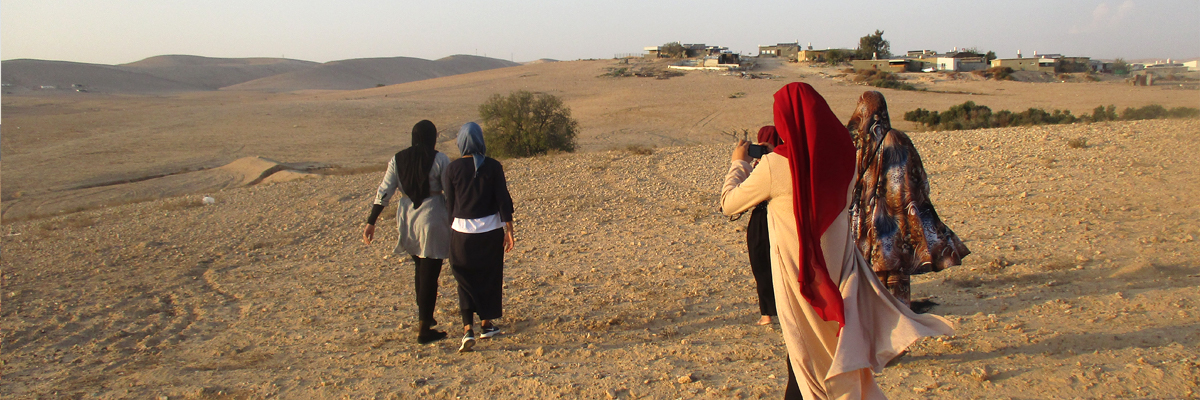
Sumud is a way of life of clinging to the land with patience and perseverance, unyielding to the authorities’ demands to leave the land in spite of the risks involved. The very fact of continuing to live in the place is actually a non violent protest of the residents, or as Salīmah from Rakhamah, one of the photographers defines Sumud:
“The lives of the Bedouins in the Naqab are not simple at all and many would not have survived the hardships they face. Nevertheless, there is much beauty in the Naqab, connection to nature, love of the land which is part of their identity, uniqueness and naturalness. Despite the shortage and the difficulties, people want to continue living in their villages, close to their families and relatives where they were born and raised. The love for the land and adhering to it, while giving up on a more comfortable life, is what gives hope to the Bedouins for a just life for future generations”.
The Sumud of Bedouin women is being manifested in the last couple of years in the considerable increase of them in higher education and in the labour market, with the goal to improve their living conditions. These women also express responsibility and initiative in leading changes in the community in various fields such as social, medical, economic and more. But despite this increase, a very large investment by the State is needed in order for other women to be able to integrate and utilize their rights and capabilities.
